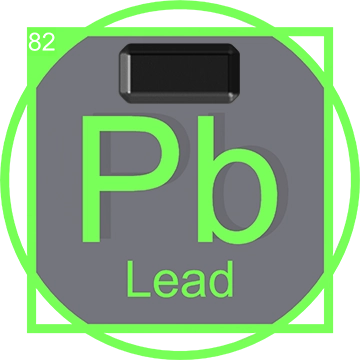Copernicium (Cn) - The 112th Element of the Periodic Table
Introduction to Copernicium
Copernicium is a synthetic chemical element with the symbol Cn and atomic number 112. It is one of the superheavy elements and is placed in group 12 of the periodic table, among the transition metals. This element is named after the astronomer Nicolaus Copernicus, reflecting its significance in the advancement of scientific knowledge.
Discovery of Copernicium

Copernicium was first discovered on February 9, 1996, by scientists at the Gesellschaft für Schwerionenforschung (GSI) in Darmstadt, Germany. The team, led by Sigurd Hofmann, created Copernicium by bombarding lead-208 atoms with zinc-70 ions. This process led to the synthesis of Copernicium-277, an isotope with a half-life of about 0.24 milliseconds.
Properties and Characteristics
As a member of the transition metals, Copernicium is expected to share some properties with zinc, cadmium, and mercury, which are also part of group 12. However, due to its extremely short half-life and the tiny amounts in which it is produced, many of Copernicium's properties remain theoretical. The element is predicted to be a liquid at room temperature, similar to mercury, and is anticipated to have a closed-shell electron configuration, which contributes to its stability among the heavier elements.
Role in Science and Research

The synthesis and study of Copernicium have played crucial roles in the field of nuclear chemistry and the study of atomic nuclei. Research on Copernicium and other superheavy elements helps scientists understand the limits of atomic stability and the forces that hold nuclei together, contributing to the broader understanding of the fundamental principles of chemistry and physics.
Conclusion
Copernicium's discovery and research offer valuable insights into the architecture of the periodic table and the behavior of materials under extreme conditions. As research continues, more information about this fascinating element will undoubtedly emerge, further enhancing our knowledge of the chemical universe.
Synthesis of Copernicium

Copernicium is not found naturally and is produced synthetically in a laboratory setting. The element is typically created through a nuclear reaction that involves firing beams of lighter nuclei at heavier target nuclei. The original synthesis of Copernicium involved bombarding a lead target with accelerated zinc nuclei. During this process, zinc-70 ions were accelerated and directed at a lead-208 target to produce Copernicium-277:
^208Pb + ^70Zn → ^277Cn + n
This reaction is conducted in a particle accelerator, an advanced piece of scientific equipment capable of propelling atomic particles to high speeds necessary for nuclear fusion.
Mining and Extraction
As a synthetic element, Copernicium is not mined from any natural sources and does not exist in appreciable quantities in any terrestrial environment. Therefore, there are no mines associated with its extraction. The focus instead is on the nuclear facilities where elements like lead and zinc, used in the synthesis of Copernicium, are handled.
Modern Applications and Future Potential

Currently, Copernicium has no practical applications outside of scientific research due to its extremely short half-life and the minute amounts in which it is produced. The primary use of Copernicium today is in research environments where scientists study its properties and those of other superheavy elements. These studies aim to expand our understanding of the periodic table and the forces that govern atomic stability.
Looking towards the future, continued research into Copernicium could lead to discoveries about how superheavy elements behave and interact. This knowledge might eventually contribute to new materials science applications, advanced nuclear medicine techniques, or even as yet undiscovered technologies. Scientists are particularly interested in discovering longer-lived isotopes of Copernicium that could provide more insights into its chemical behavior under normal conditions.
Conclusion
The journey of Copernicium from its initial synthesis to its potential future applications demonstrates the relentless pursuit of knowledge in the field of chemistry and physics. While it currently serves as a key subject of scientific studies, the insights gained from Copernicium could one day pave the way for revolutionary applications in technology and medicine.












